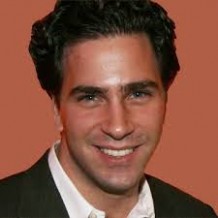The Rise and Fall of the CEO – By Samuel Phineas Upham
Can a CEO remain in office indefinitely? Or is there a shelf life to CEO tenure? In his essay “Political Dynamics and the Circulation of Power: CEO succession in the U.S. industrial Corporations, 1960-1990,” William Ocasio examines the various elements that affect CEO longevity. He showcases two models through which to understand CEO longevity, the model of the circulation of power and the model of the institutionalization of power. These models are very different from one another and offer a different take on power accumulation, CEO tenure, effects of time, and strategic maneuvering. The author makes predictions from each model and then tests them.
Ocasio’s argument is based on the opposing views of the circulation of power and the institutionalization of power. The circulation of power theory states that the CEO’s position is compromised the longer he or she stays in power. According to this point of view the longer a CEO is in power the more time the company and the people have to criticize and dislike the CEO. However, the institutionalization of power view states the opposite. According to the second view, a leader’s position becomes more secure over time, and the CEO has a better opportunity to stay in power the longer he or she has been in office.
However there are some hidden presuppositions in the structuralist view of CEO tenure. The first assumption is related to personality characteristics. The metrics doesn’t include any, which means that they are assuming every CEO is affected the same way. The second assumption has to do with how the CEO left the company. Did he or she leave voluntarily? Nevertheless, the author isn’t concerned with these issues.
In order to distinguish between the two models in the paper, Ocasio presents competing and complementary theories. In the institutionalization model, he shows that the amount of time a CEO is in office will drop the rate of CEO succession but increase in the circulation of power model. He also adds that performance or a bad economy might influence a CEO’s decision to stay or leave. He develops other theories that are a combination of the predictions of the two models.
The author’s results show that the circulation of power view has precedent during the first ten years in office, but that after that time the CEO starts to solidify his position in a way that is similar to that explained in the consolidation of power model. The study revealed that a CEO’s previous board experience was actually a liability during times of trouble instead of an asset.
————————————————————————–
 This article was written by Samuel Phineas Upham. Samuel Phineas Upham is an investor in New York City and San Francisco. To find out more visit Samuel Phineas Upham Website and Samueal Phineas Upham Twitter page.
This article was written by Samuel Phineas Upham. Samuel Phineas Upham is an investor in New York City and San Francisco. To find out more visit Samuel Phineas Upham Website and Samueal Phineas Upham Twitter page.



